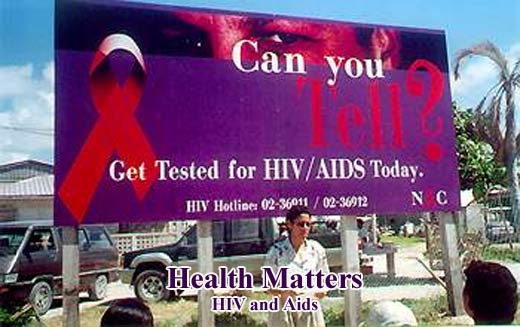
|
|
| The
very first case of AIDS in Belize was reported in 1986. By the
end of 2003 a total of 2,471 people had acquired HIV of which
669 developed AIDS. Of that number, 464 died. The Pan American
Health Organization reports that HIV/AIDS is the fourth leading
cause of death in Belize, second among males and sixth among females.
As for infections, outside of the African continent, Belize has
the sixth highest prevalance of HIV/AIDS in the world. Belize,
with a population of over 266,440, has the highest per capita
HIV infection rate (2.4%) in Central America.
The Cornestone Foundation has declared that "HIV is an epidemic in Belize". They base that statement upon the 2004 World Population Data Sheet that is republished on their website. Quoting the Cornerstone Foundation, " According to the 2004 Belize Epidemiological Fact Sheet, HIV prevention strategies depend on the twin efforts of care and support for those living with HIV or AIDS, and targeted prevention for all people at risk or vulnerable to the infection. The predominant mode of transmission of HIV is sexual intercourse." Cornerstone goes on to say, "Condoms are the only technology available that can prevent sexual transmission of HIV. Persons exposing themselves to the risk of sexual transmission of HIV should have consistent access to high quality condoms. The Epidemiological Fact Sheet states that the indicators on knowledge and misconceptions are an important prerequisite for prevention programs to focus on increasing people's knowledge about sexual transmission, and, to overcome the misconceptions that act as a disincentive to behaviour change. Indicators on sexual behaviour and the promotion of safer sexual behaviour are at the core of AIDS programs." Tragically, HIV/AIDS is affecting the age group most vital to the Belizean population, those that are primarily between the ages of 15 and 49 years young. Sadly this sector of the Belizean population represents the productive fibre of the population of Belize. This group represents the countries health care workers, teachers, politicians, business leaders, clergy and farmers. From the Maya to the Garifuna to the Kriol to the Mestizo to the Expats and beyond, the very best that Belize has to offer is now faced with a global concern. As the general population faces an increasingly alarming new HIV infection rate that continues to rise, officials need to reflect upon the sheer reality of the times. For as tourism numbers grow weekly with the arrival of cruise shippers, so does the likelihood that the epidemic as announced by The Cornerstone Foundation will continue to affect the future of the land by the Caribe Sea. |
|
|
|
Top photo provided
by www.sanpedrosun.net |

